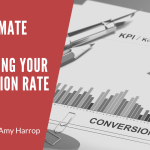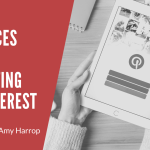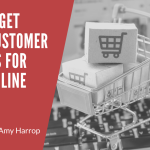 As an author it’s normal to put your stock in words. After all, they’re the vehicles you use to bring your ideas to the world.
As an author it’s normal to put your stock in words. After all, they’re the vehicles you use to bring your ideas to the world.
Along with writing an actual book, self-published authors also tend to use other primarily text-based methods when the time comes to promote that book and ramp up marketing efforts.
Newsletters, E-zines, your own regularly updated blog, guest posts and articles are all powerful ways to attract right audience and pull them into your web of influence.
While these activities are all positive, it’s all too common for more literarily inclined individuals to overlook other important methods of communication. One of the most important being visual cues.
Why are Visual Cues Important?
Studies show that the majority of all people learn best with the help of visual aids. In fact, as many as 65 percent of all people are classified as primarily visual learners.
This means that if you only communicate with your audience using the written word, chances are that you’re missing a ton of opportunities to connect with and influence a large segment of people. Not because they wouldn’t enjoy what you have to say, but simply because the vehicle you use to transfer those ideas is not the ideal one.
Visual learning tools are powerful because of the variety of benefits they offer:
- They improve the ability to store information long-term. It’s very common for people to forget something they read after a short while, however the memory of an image tends to linger in the mind much longer after it is viewed.
- They allow for faster communication of information. While it takes several minutes to read a piece of content in order to gather the relevant information, the brain processes an image within a fraction of a second.
- They can trigger a powerful emotional response. The right image has the ability to stir up an acute emotional response in the person looking at it. This response also tends to be much more powerful than if that same trigger was delivered through text alone. That’s why image billboards are a marketing staple.
- They enhance the comprehension of a subject. Visual tools have been shown to improve learning comprehension by as much as 400 percent when compared to text because of how they stimulate the brain and speed up information processing.
- They can be highly compelling and motivational. The average person tends to be more interested in learning about a topic if images are used exclusively or in combination with text.
So do these facts suggest that improving book promotion success requires abandoning your pen and paper and word processor for a canvas and pallet or Photoshop?
Of course not.
The ideal way forward is to build a solid foundation using written words to express key ideas before using those same words as a springboard for creating content that’s geared towards the more visually inclined.
You can think of it as creating and casting a wider “net” to catch more of your ideal prospects every time you throw out your content “bait”.
Four Effective Visual Tools for Book Promotion
Now that we’ve established the reasoning behind the need for visual content in book promotion, it’s time to explore some of the tools you can use to positively influence a wide variety of prospects and get them interested in your offerings.
- Kindle Instant Preview
Nothing grabs a book buying prospects attention better than a chance to get a “peek behind the curtain” so to speak.
That’s exactly what Amazon Kindle’s book preview feature offers. With a few clicks of a mouse, you can quickly and easily give interested parties a preview of what to expect inside the pages of any book you have listed for sale on Amazon’s Kindle platform.
Some of the features that make this an excellent visual book promotion tool include:
- The ability to embed the previews into article text, email messages and on your author website.
- Free access to a sample of your book for anyone curious enough to click.
- A direct link to the Amazon sales page for your book.
Being able to preview additional content directly from your web page, email or article also keeps visitors on your website longer, which increases the odds of engagement.
Of course the one and only caveat is that this feature is exclusive to authors who self-publish using Kindle.
- Infographics
Another powerful visual tool you can use to promote your self-published books are infographics.
An infographic is a visual representation of information or data. A well-designed infographic has the ability to communicate a lot of valuable information very quickly when compared to the time it takes to absorb and process that same information delivered in written format.
Ideas for infographics for authors include things like:
- Step by Step Tutorials
- Relevant Statistics
- Book Launch Information
- Character Profiles
Admittedly, infographics are much more geared towards sharing and promoting non-fiction books than they are for fiction writers.
However, all authors can use infographics in creative ways to promote their brand, position themselves as an expert in a particular area and to attract attention to their author page and social media links.
- Image Quotes
While they could be considered as a form of infographic, quotes stand out in particular because people love them. Especially if they’re inspirational.
Check out your social media feeds at any time and you’ll likely notice a large number of quotes from many of the world’s most prolific writers that get shared on a daily basis.
If there are any powerful phrases contained in your book or related to your book offer, turn the idea into a meaningful and sharable quote. Combine the text with a relevant image and you may have a potential viral campaign that attracts a lot of prospects in a short amount of time.
- Book Covers
The phrase “a picture is worth a thousand words” is as relevant today as it ever was, because it’s 100% true. Particularly when it comes to book covers.
Whether the book in question is fiction or non-fiction, the appeal of its cover goes a long way in determining if your ideal reader decides to buy it or not.
Creating a quality book cover design accomplishes several things:
- It attracts attention
- It demonstrates the overall quality of the book.
- It sets expectations for the content of the book
- It engages the potential reader on an emotional level and compels them to want to know more.
If you’re interested in trying out infographics, image quotes or creating well-designed eBook covers for your own book promotions, Canva is one of the simplest and most popular graphic creating solutions available online. With a few mouse clicks you can create beautiful and shareable infographics.
Start Using Visual Cues Today
By using more visual cues in your marketing efforts, your messages become more powerful and you improve your ability to connect with your target audience in a deeper and more meaningful way.
Add in the fact that most self-published authors rarely give a thought to the idea of using images to promote their work, and you are likely to quite literally stand out in a sea of text.
Using images liberally as part of your overall marketing and promotion strategy is one of the simplest and smartest moves you could make. Start today and reap the rewards of greater visibility, more traffic to your website and a boost in book sales.




Thank you Amy. That is fabulous information. I particularly loved the idea of using the Kindle Previewer for marketing. Plus the images as visual cues, I create my own images, so that’s something I will do. I haven’t done it yet as don’t think they are very good but so far there have been no complaints LOL
I’ve been slack with my book marketing but decided after reading this that I shall put aside time each week to get the ball rolling again.
thanks for the kind words! Glad to hear it inspired you. 🙂
I was just reading about info-graphics yesterday on the Creative Penn blog. I have a large board on Pinterest, so will be putting one on that. Heading off to Canva to see whether they have a template for them, but will probably end up on Fiverr!
Thanks for the useful post Amy!
Great idea! I’ve been doing a lot more with Pinterest lately too. thanks!
Good news, Canva does have a free infographic creator!
https://www.canva.com/create/infographics/